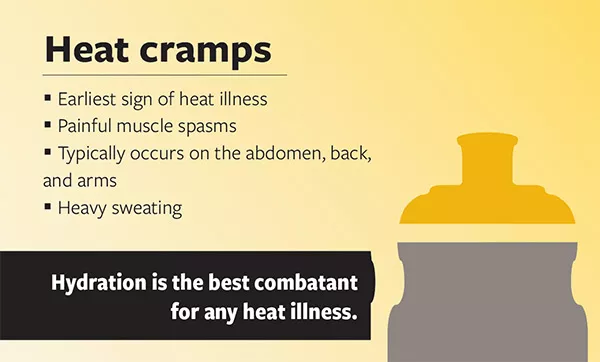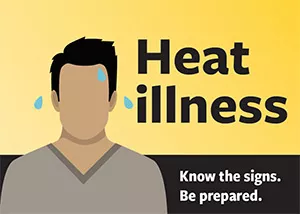Heat cramps

Take action if you develop cramps during or after being in the heat. Cramping is one of the first stages of heat illness.
Heat cramps are painful muscle spasms that occur due to dehydration and loss of nutrients from excessive sweating. They are associated with heavy perspiration. Heat cramps are most common in the abdomen, back, arms, or legs.
Prevent heat cramps
Stay safe when you are in the heat.
- Drink plenty of water before, during, and after being in the heat.
- Use salty snacks such as nuts or energy bars when excerising in the heat
- Take breaks from the heat to cool down and stop sweating.
- Refrain from drinking alcohol, caffeine, and sugary beverages before, during and after being in the heat.
Be prepared for the heat
If you have to be in hot temperatures, always bring water. Electrolyte drinks, such as Gatorade, replenish sodium, potassium, and other electrolytes that are loss due to sweat. Plan to take breaks from exercise more often. Children, elderly, and the obese are the most susceptible to heat cramps.
How do you treat heat cramps?
If you develop heat cramps, get out of the heat and cool down. Rest in a well-ventilated or air-conditioned area. Drink water and an electrolyte beverage. Consume water frequently over the next few hours. You can make your own salted drink to replenish lost nutrients by combining one teaspoon of salt with a quart of water.
How do cramps relate to heat illness?
Your body loses nutrients when it sweats. If nutrients are lost more quickly than they are replenished, it can lead to cramps. Cramping is one of the first signs your body can’t handle the heat. Take action and prevent the progression of heat illness.

Heat illness affects everyone: you, your family, your neighbors, your customers.
Use this one-page guide to spread awareness of the dangers of heat illness.